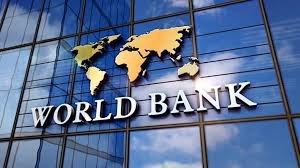The World Bank has revised its global poverty thresholds, raising the international benchmark for extreme poverty from $2.15 to $3 per person per day. The update, driven by shifts in global living costs and improved economic data from low-income countries, underscores a sobering reality: an estimated 808 million people worldwide still live in extreme deprivation.
While the Bank highlighted a significant decline in global poverty—1.5 billion fewer people living in extreme poverty compared to 1990—it warned that progress has slowed sharply over the past decade. The slowdown, it said, is due to a mix of sluggish economic growth, mounting debt, conflicts, and intensifying climate shocks.
The Bank announced in a statement on Tuesday, that the revised poverty thresholds now extend to middle-income countries as well. For lower-middle-income economies, the poverty line has been raised from $3.65 to $4.20 per day, while in upper-middle-income countries, it has increased from $6.85 to $8.30 per day.
Despite these changes, the World Bank emphasized that the underlying methodology for poverty measurement remains unchanged. “The international poverty line still measures the percentage of people living in absolute poverty according to the standards of the world’s poorest countries—just as it has since 1990,”
The new estimates are anchored in household survey data, which remains central to global poverty assessment. These surveys collect representative data on income, spending, and living standards—particularly from populations often underrepresented in digital or administrative records.
“The scope and quality of household surveys have improved dramatically, especially in low-income countries,” the Bank noted. “We’re now capturing more comprehensive consumption patterns, including expenditures on meals outside the home, housing, and mobile phone maintenance.”
This richer dataset allows for more accurate insights into poverty levels. Yet the Bank acknowledged that challenges persist, calling for better data accuracy, timely reporting, and improved statistical capacity. “Filling data gaps remains a core part of our mission,” it said.
While international poverty lines are essential for cross-country comparisons, the Bank urged governments to rely on national poverty lines for domestic policy decisions. “These lines are critical for designing programs that truly reflect the cost of living and the realities of the poor in each country,” it stated.
The Bank also reiterated that poverty extends beyond income. “Poverty is multidimensional. It includes lack of access to clean water, electricity, education, healthcare, and sanitation. To truly address poverty, we must look beyond just dollars and cents.”
Concluding its statement, the World Bank stressed the centrality of data in global development. “To end poverty and boost shared prosperity on a livable planet, we rely on strong data. Strengthening how we measure global poverty ensures we continue moving in the right direction—even if that path is now more complex than ever.”



